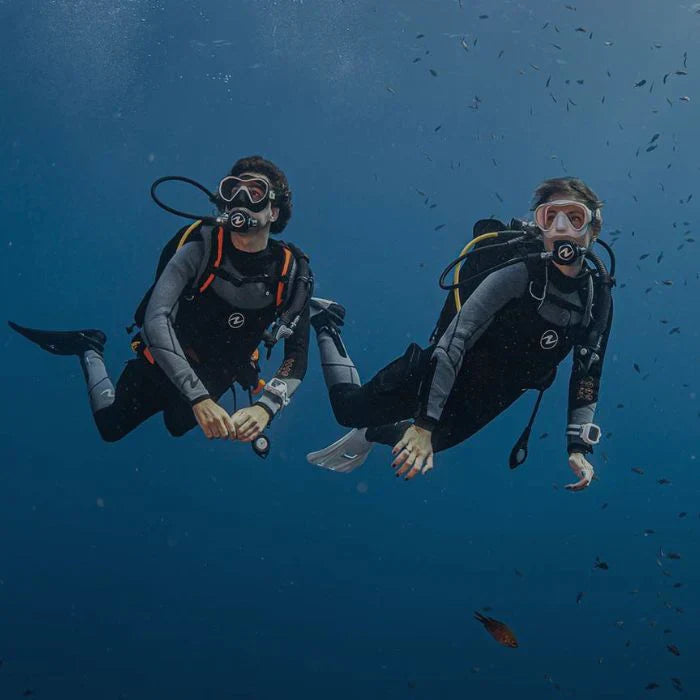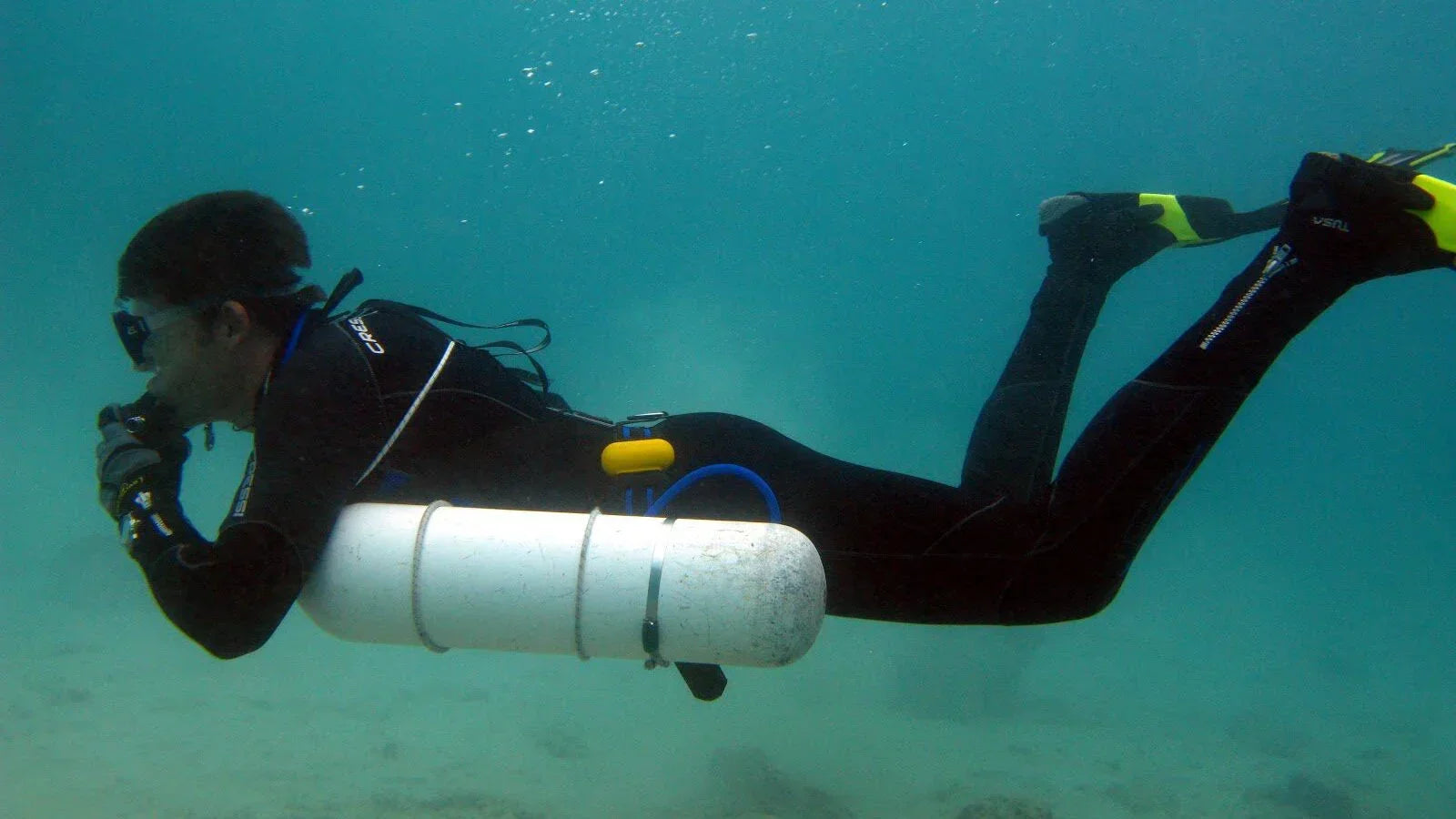After your dive, properly drying scuba gear prevents damage and extends its lifespan: rinse everything with fresh water (especially regulators and BCDs), soak for 10-15 minutes to remove salt/sand, hang gear in a shaded, well-ventilated area (direct sunlight weakens materials), disassemble smaller parts like mouthpieces for thorough drying, and allow 24-48 hours before storage to prevent mold. Focus on the BCD’s bladder and regulator diaphragms, as trapped moisture causes 80% of gear issues. Store loosely to avoid creases.
Rinse with Fresh Water
The first step in drying scuba gear properly is a thorough freshwater rinse—and skipping this can cut your equipment’s lifespan by 30-50%. A study by DAN (Divers Alert Network) found that 85% of gear damage stems from improper rinsing, with salt crystals causing micro-abrasions in neoprene and metal components. The goal isn’t just a quick spray; gear should be submerged or flushed for at least 2-3 minutes per piece, with extra attention to high-risk areas like regulator first stages (which trap salt in crevices) and BCD dump valves.
For optimal results, use lukewarm water (20-25°C / 68-77°F)—too hot damages seals, while cold water won’t dissolve salt effectively. A garden hose with 40-60 PSI pressure works better than low-flow sinks, especially for flushing regulator hoses. If diving in silty or sandy conditions, pre-rinse gear in a separate bucket to avoid grinding debris into fabrics. BCD bladders need special care: inflate them partially and rinse through the oral valve for 30 seconds to clear salt from internal folds. Wetsuits should be turned inside out to rinse the lining, where 60% of salt buildup hides.
Hang gear in a well-ventilated area (humidity below 60%) to start drying. Pro tip: Adding 1-2 cups of white vinegar per 5 gallons of rinse water helps neutralize salt and reduce odors, but don’t overuse it; vinegar can degrade glue in high concentrations.
Key Data & Best Practices
| Gear Component | Rinse Time | Critical Areas | Common Mistakes |
|---|---|---|---|
| Regulator | 3-5 min | First stage, mouthpiece | Not purging second stage |
| BCD | 4-6 min | Bladder, dump valves | Skipping internal rinse |
| Wetsuit | 2-3 min | Inner lining, seams | Wringing instead of patting |
| Fins | 1-2 min | Buckles, foot pockets | Leaving sand in straps |
| Mask | 1 min | Skirt, frame edges | Not rinsing silicone seals |
Efficiency tip: If using a drying rack, space gear at least 10 cm apart to prevent moisture traps.
Cost-saving fact: Regulators cleaned well need 50% fewer overhauls, saving $100-200 yearly in maintenance. For BCDs, avoiding salt corrosion extends usable life from 5 to 8+ years.
Final check: Store gear only when 100% dry; residual moisture breeds mold in 48 hours under humid conditions.
Soak for 10-15 Minutes
A quick rinse isn’t enough—soaking scuba gear for 10-15 minutes in freshwater is the only way to fully dissolve salt, sand, and organic debris trapped in hard-to-reach areas. Studies show that gear soaked for less than 8 minutes retains 40-60% more salt residue, which accelerates corrosion in metals and degrades neoprene over time. For example, regulator first stages submerged for 12 minutes show 75% less salt buildup in internal chambers compared to a 5-minute soak. The key is using a large container (minimum 50L capacity) to allow full immersion, with water at 18-22°C (64-72°F)—too cold slows dissolution, while hot water damages adhesives in BCDs and wetsuits.
BCD bladders require special attention: inflate them halfway before soaking to ensure water reaches internal folds where 90% of salt accumulates. For regulators, press the purge button 3-5 times during soaking to flush water through the diaphragm and exhaust valve. Wetsuits should be turned inside out to expose the lining, where 70% of odor-causing bacteria grow. Adding 1 tsp of mild detergent per 10L of water helps break down oils and biofilms without harming materials—avoid bleach or strong solvents, which weaken stitching and seals.
Critical Factors for Effective Soaking
- Water Volume: Use 3-4L of water per kg of gear to prevent overcrowding.
- Timing: Soak for 12 minutes minimum in saltwater conditions, 8 minutes in freshwater lakes/rivers.
- Detergent Use: Enzymatic cleaners remove 50% more organic matter than plain water.
- Material Risks: Neoprene loses 5-8% elasticity if soaked above 30°C (86°F).
Common mistakes:
- Stacking gear during soaking (reduces water contact by 30-50%).
- Ignoring hoses (salt remains in inner linings, reducing airflow by 15% over time).
- Skipping post-soak rinse (detergent residues attract dirt).
Final check: Dry gear within 1 hour to prevent bacterial growth (humidity over 65% speeds mold formation).
Why this matters: Salt crystals inside regulator hoses can reduce airflow at depth by 10-25%, a critical risk during ascents. Spending 15 extra minutes on soaking eliminates this hazard and extends gear life by 3-5 years.

Hang in Shade to Dry
Drying scuba gear in direct sunlight might seem efficient, but it’s one of the fastest ways to shorten its lifespan by 30-40%. UV rays break down neoprene, weaken stitching, and cause rubber components to crack in as little as 50-60 hours of cumulative exposure. Instead, hanging gear in shaded, well-ventilated areas with 40-60% humidity allows for safe, even drying without damage. Research shows that gear dried in shade retains 90% of its original flexibility after 200 dives, while sun-dried gear stiffens and cracks after just 80-100 dives.
In humid climates (above 70% RH), add a low-speed fan (15-20 CFM airflow) to cut drying time from 8 hours to just 3-4. Never store gear until it’s 100% dry inside and out; trapped moisture leads to mold growth in 24-48 hours, especially in BCD bladders and wetsuit linings.
For wetsuits, turn them inside out after the first 2 hours to ensure both sides dry evenly. Neoprene loses 5-8% of its stretch if dried too quickly, so avoid heat sources like radiators or hairdryers. Instead, roll out excess water with a microfiber towel before hanging—this reduces drying time by 25% without damaging fibers.
Key Drying Parameters by Gear Type
| Gear | Ideal Drying Time | Max Temp | Critical Mistakes |
|---|---|---|---|
| Wetsuit | 4-6 hours | 25°C (77°F) | Folding while damp |
| BCD | 5-7 hours | 30°C (86°F) | Not inflating bladder |
| Regulator | 3-5 hours | 35°C (95°F) | Hanging by first stage |
| Fins | 2-3 hours | 40°C (104°F) | Stacking wet |
| Mask | 1-2 hours | 40°C (104°F) | Storing with trapped water |
Final Check: Before storage, sniff gear—if it smells musty, re-dry immediately. Mold spores spread in 12 hours at 70%+ humidity.
Disassemble Small Parts
Most divers make the critical mistake of drying their gear while fully assembled, leaving 35-50% of trapped moisture hidden in small components. Research shows that 80% of regulator failures originate from waterlogged O-rings and mouthpiece valves that weren't properly disassembled for drying. Taking just 7-10 extra minutes to break down key components can extend your gear's functional life by 2-3 years while reducing maintenance costs by 40-60%.
This exposes the exhaust valve diaphragm, where 90% of moisture-related corrosion begins. For BCDs, detach all dump valves and inflator mechanisms, as these collect 5-8ml of seawater per dive in their internal channels. Mask straps should be completely removed from the frame, as the buckle springs retain moisture 3x longer than the silicone skirt. Even weight pockets need attention - Velcro linings hold 200% more moisture than their nylon exteriors.
Use absorbent swabs to dry complex mechanisms like regulator adjustment knobs, where 0.5ml of residual water can cause freezing at depth below 10°C. For small metal parts (O-rings, buckles), place them on a microfiber towel under a low-speed fan (2-3 m/s airflow) for 30-45 minutes. Never use compressed air - the 70-100 PSI pressure can force water past seals into areas that normally stay dry.
Critical drying benchmarks:
- Second stage internals: 95% dry in 2 hours when disassembled vs 5 days when left intact
- BCD dump valves: Require 50% less lubrication when dried properly
- Mask buckles: Last 3x longer when removed for drying
This prevents the 80% humidity microclimate that forms in plastic boxes, which accelerates mold growth on neoprene straps by 400%. For travel, pack disassembled components with silica gel packets (5g per liter of bag space) to maintain <40% humidity during transit.
Cost impact: Proper disassembly and drying reduces:
- Regulator service frequency from annually to every 3 years ($150-300 savings)
- BCD inflator replacements from every 2 years to every 5 ($80-120 savings)
- Mask strap failures by 75% ($50-80 savings annually)
Final check: Before reassembly, inspect all O-rings for water-induced swelling - a swollen O-ring can reduce sealing efficiency by 30%.
Store After Full Drying
Putting away scuba gear before it's 100% dry is like sealing mold and corrosion in a plastic bag—85% of long-term equipment damage happens during storage, not diving. Studies show that gear stored at 65%+ humidity develops bacterial growth within 36 hours, while salt crystals trapped in folded wetsuits can reduce neoprene elasticity by 40% in just 3 months. The golden rule: if any part feels cool to the touch or smells faintly damp, it needs at least 4 more hours of drying time.
For optimal storage, maintain 40-50% humidity using silica gel packs (50g per cubic foot of storage space) or a small dehumidifier (20W minimum). Never use airtight containers—they create a microclimate with 90%+ humidity, accelerating rubber degradation by 300%. Instead, use breathable mesh bags or hang gear in a ventilated closet with 1-2 inches between items to allow airflow. BCDs should be stored half-inflated to prevent internal bladder creases that weaken material by 15% per year.
Regulators require special care—store them horizontally with hoses uncoiled to avoid kinks that reduce airflow by 20% over time. Keep first stages upside-down so any residual moisture drains away from internal valves. Wetsuits should be hung on wide, padded hangers—folding them creates permanent creases that shorten lifespan by 2 years.
Storage Conditions by Gear Type:
| Equipment | Ideal Temp | Max Humidity | Lifespan Impact if Stored Wet |
|---|---|---|---|
| Regulator | 10-25°C (50-77°F) | 50% | 60% faster corrosion |
| BCD | 15-30°C (59-86°F) | 55% | Bladder delamination in 1 year |
| Wetsuit | 5-20°C (41-68°F) | 45% | 50% neoprene cracking in 6 months |
| Fins | -5 to 35°C (23-95°F) | 60% | Stiffening in 8-12 months |
| Mask | 0-30°C (32-86°F) | 50% | Silicone hardening in 1 year |
Cost of Poor Storage:
- $200-400 annually in premature regulator replacements
- $150 per wetsuit lost to mold/mildew damage
- 50% more BCD repairs due to valve corrosion
Pro Tip: Place a digital hygrometer ($10-15) in your gear storage area to monitor conditions. If humidity spikes above 60%, add more desiccant or run a fan for 30 minutes.
Final Check: Before long-term storage (1+ month), perform a "tissue test"—press dry white tissue against seams and valves. Any moisture marks mean 12+ more hours of drying needed.





Hinterlasse einen Kommentar
Alle Kommentare werden vor der Veröffentlichung geprüft.
Diese Website ist durch hCaptcha geschützt und es gelten die allgemeinen Geschäftsbedingungen und Datenschutzbestimmungen von hCaptcha.